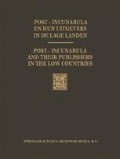Overzicht
Deze “mystieke rozenkrans,” bestaande uit vijftien tientjes, is verlucht met zesenvijftig fraaie houtsneden die het leven van Maria uitbeelden. Het boek kende ongetwijfeld veel bijval, aangezien alleen al Marten de Keyser er tussen 1533 en 1535 zes uitgaven van bezorgde, in het Latijn, het Nederlands, het Frans en het Engels. In al deze uitgaven komen dezelfde houtsneden voor; één, de Schepping van Eva, vertoont het jaartal 1530. Zij zijn niet gesigneerd maar werden toegeschreven aan de Duitse graveur Anton van Worms. Men treft ze inderdaad aan in de allereerste uitgave van dit werk, in het Duits verschenen bij Eucharius Cervicornus te Keulen omstreeks 1530–1531. Op de Latijnse uitgave van 1535, de derde bij De Keyser verschenen, komt zijn naam voor, samen met die van een van zijn collega’s, Willem Vorsterman. Een van de meest verfijnde afbeeldingen is het huiselijk tafereel waar de Heilige Familie aan het werk is. In een landelijke omgeving zien wij op het erf van een boerderij Maria aan het naaien terwijl Jozef met een bijl hout klein hakt dat door het kind Jezus in een mand wordt geschikt. De vlotte tekening en een luchtige opstelling van de personages dragen bij tot de rust en het stil levensgenot dat van dit tafereeltje uitgaat.
Abstract
This “mystic rosary,” prayers to the Virgin to be recited on a chaplet composed of fifteen decades of aves preceded by a paternoster, is illustrated by fifty-six charming woodcuts depicting the life of St. Mary. The book was undoubtedly a great success, for Marten de Keyser alone published six editions in Latin, Flemish, French and English between 1533 and 1535. All these editions were adorned with the same woodcuts, one of which, the Creation of Eve, bears the date 1530. They are not signed, but have been ascribed to a German engraver named Anton von Worms; and they are found in the work’s editto princeps, which appeared in German at Cologne in about 1530–1531, published by Eucharius Cervicornus. The Latin edition of 1535, the third to be published by De Keyser, names the printer in association with one of his colleagues in Antwerp, Willem Vorsterman. One of the most delightful illustrations in the book shows a scene of family life: the Holy Family at work. In a rustic setting we see a farmyard with Mary sewing, while Joseph chops wood which the child Jesus arranges in a basket. The easy manner of execution and flexibility of the design contribute to the sense of calm and gentleness which emanates from this little tableau.
Access this chapter
Tax calculation will be finalised at checkout
Purchases are for personal use only
Editor information
Rights and permissions
Copyright information
© 1978 Springer Science+Business Media Dordrecht
About this chapter
Cite this chapter
Vervliet, H.D.L. (1978). Antwerpen, Marten de Keyser & Willem Vorsterman, 1535. In: Vervliet, H.D.L. (eds) Post-Incunabula en Hun Uitgevers in de Lage Landen / Post-Incunabula and Their Publishers in the Low Countries. Springer, Dordrecht. https://doi.org/10.1007/978-94-017-4814-8_46
Download citation
DOI: https://doi.org/10.1007/978-94-017-4814-8_46
Publisher Name: Springer, Dordrecht
Print ISBN: 978-94-017-4603-8
Online ISBN: 978-94-017-4814-8
eBook Packages: Springer Book Archive

